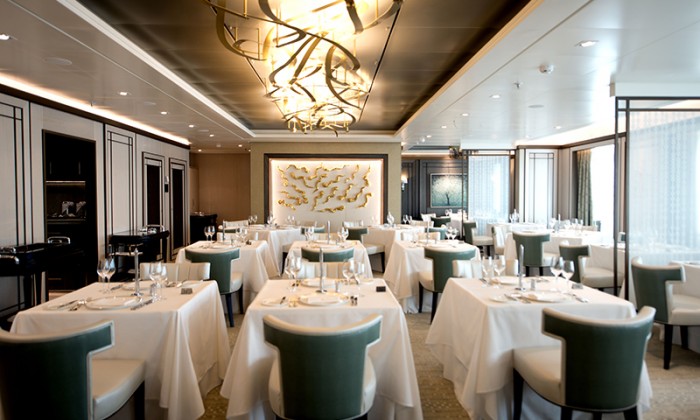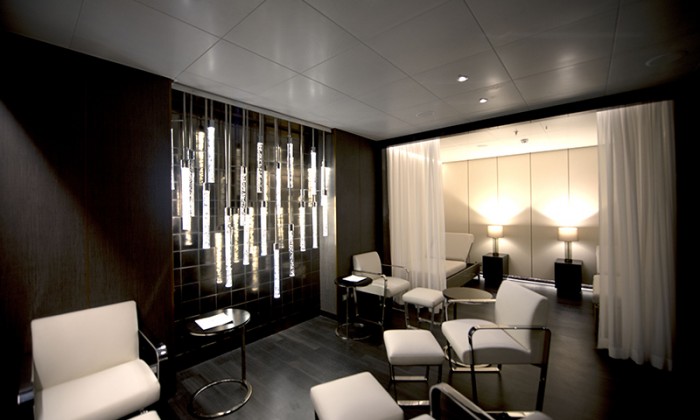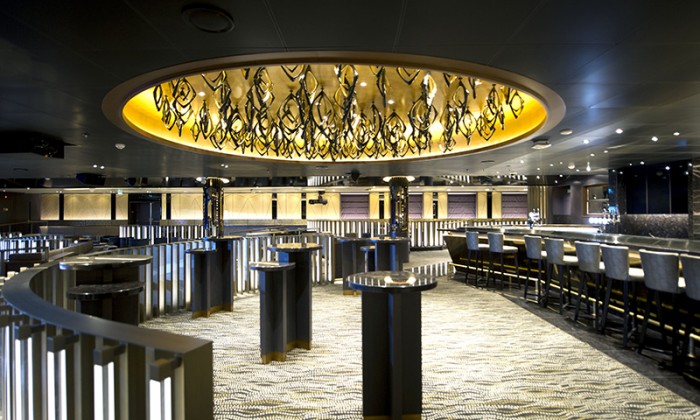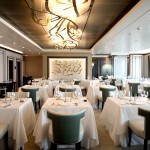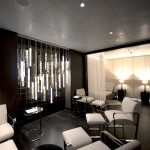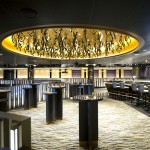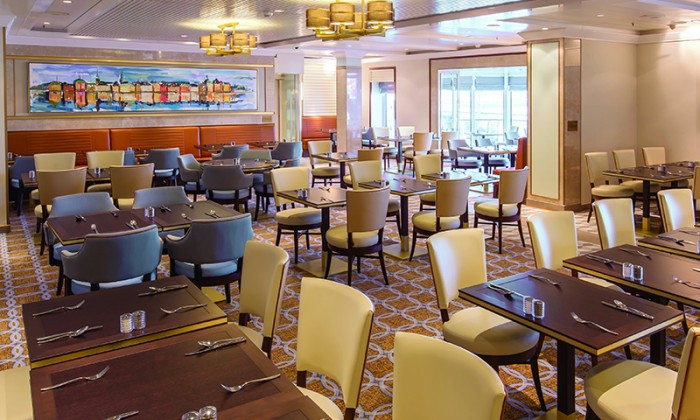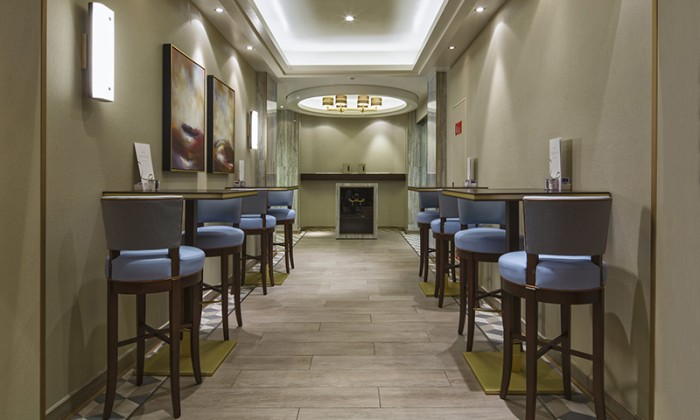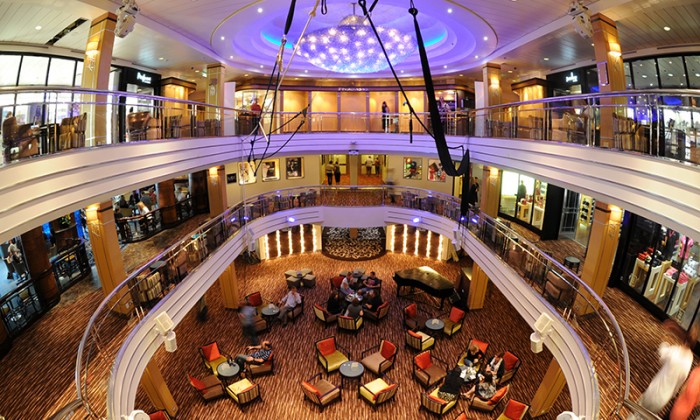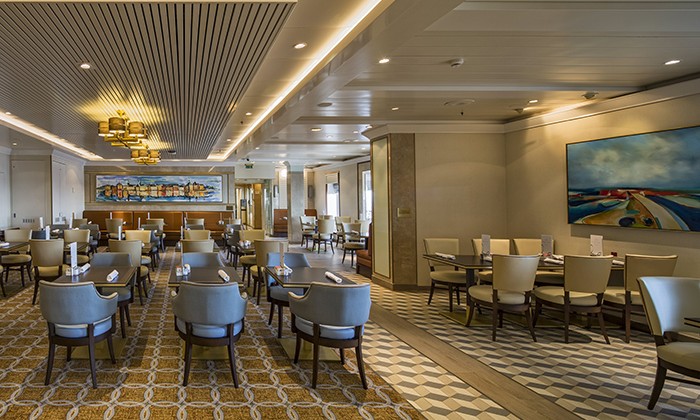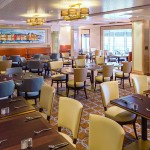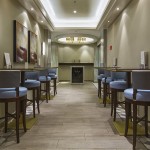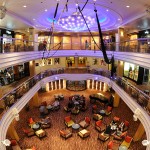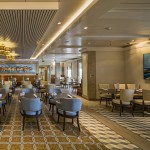A Voyage into the Cruise sector
As a commercial sector, cruise shows no signs of slowing down. According to the CLIA (Cruise Lines International Association) around 24 million passengers are expected to sail in 2016, a 60% increase in just 10 years. Europe represents the world’s second biggest passenger source, 6.6 million Europeans went on a cruise in 2015, 3% more than in 2014. Europe is also the world’s second most popular cruise destination, second only to the Caribbean. As the centre of the world’s cruise shipbuilding, European shipyards continue to build the world’s most innovative and largest ships with spending on new builds and maintenance increasing for a fourth year in a row. 48 cruise ships are currently on the order books of European shipyards until 2019, with a total value of more than €27 billion.
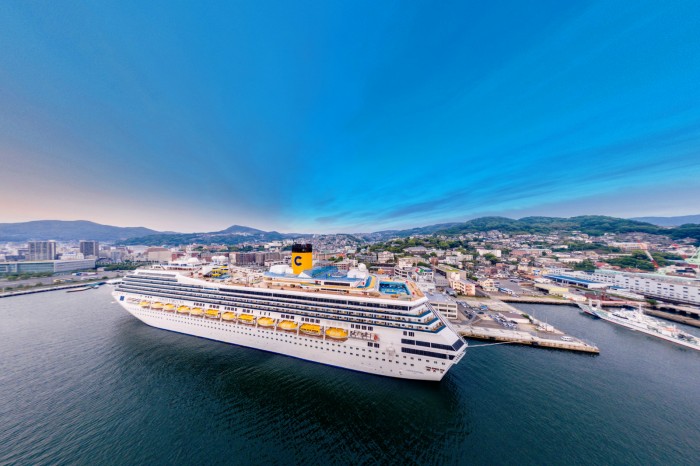
Design Insider caught up with Roger Frizzell, Senior Vice President and Chief Communications Officer at Carnival Corporation & plc, to get an inside view of how they approach interior design. This dually-listed British-American company has headquarters in both Southampton, England, and Doral, Florida, USA. Its brand portfolio includes Carnival Cruise Line, Fathom, Holland America Line, Princess Cruises, Seabourn, P&O Cruises, Cunard, AIDA Cruises and Costa Cruises, together they make up the world’s largest cruise company.
With such a broad portfolio of brands, Roger explains how vital interior design is in creating the overall experience;
“the global cruise market continues to evolve with amazing new ships and features, as well as exciting new destinations. The ships being built for our brands have a distinct personality and style that uniquely fit the tastes of millions of our guests. It all starts with the interior design that defines the experience on our ships from the moment our guests come on board to throughout the cruise”.
It’s great when Design Insider gets to speak with BCFA members working on the same projects, but from a totally different perspective, so from floors we take a look up at lighting. Chelsom were commissioned to create a series of bespoke lighting products onboard Britain’s biggest ever cruise ship, the £473 million P&O Britannia, which was officially named by Her Majesty The Queen at a glittering ceremony in Southampton in March last year.
The 3,647 passenger luxury cruise liner is the largest vessel designed for the British holiday market and stretches longer than the Eiffel Tower is tall. It boasts 15 passenger decks, 26 bars and eateries and 4 swimming pools. It also features a three-tier atrium, a 936-seater theatre and a multi-million pound art collection.
Award winning designers Richmond International and Chelsom partnered to produce an array of unique lighting products for the public areas, designed to enhance the sophisticated luxury of the wider interior scheme. Chelsom’s vast experience in devising lighting schemes for marine projects ensured that all products supplied blended superior design and functionality with the exacting requirements of marine specification.
Morgan design and manufacture original furniture for many of the world’s leading cruise companies including Carnival Cruise Line, P&O Cruises, Cunard, Princess Cruises and Holland America Line. Success in this market is demonstrated in Morgan’s ability to rise to the many challenges associated with a floating hotel. These include conforming to IMO (International Maritime Organisation) contract standards for upholstery materials, adhering to weight restrictions for furniture, and being flexible and reliable with regards to delivery when the ship is in port and may only have an eight-hour window before again setting sail.
The type and style of furniture specified varies to reflect the passenger demographic of the cruise ship. Practical and attractive products are required to suit environments that range from a traditional cabaret through to the trendy nightclub scene and elegant formal dining through to a relaxed cafe feel.
At Design Insider we also recognise the crucial role art has in creating the overall ambience. Cleverly used, art can create beauty and function which we see as a winning formula. Spires Art achieved this with their stunning double sided laminated glass art panels for Royal Caribbean Internationals’ Oasis of the Seas and Allure of the Seas ships, two of the biggest in their fleet. The large scale art pieces consist of a beautiful scenic image displayed across a number of laminated glass panels.
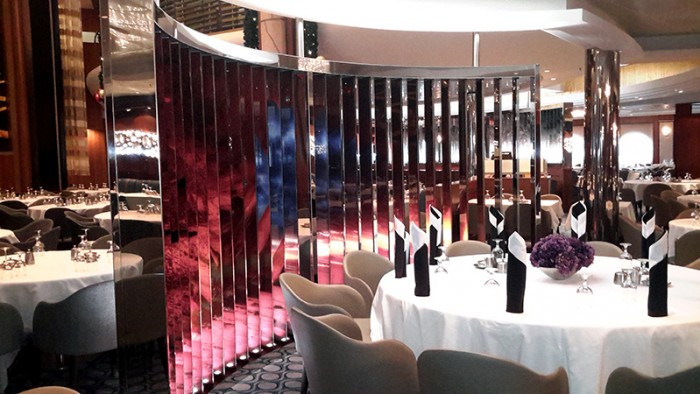
As a sector, cruise has outperformed other leisure destinations and continues to grow in popularity. Carnival Corporation is a good example of a cruise operator with multiple brands targeting different demographics. The traditional demographic of retirees now has even more choice at the luxury end of the market with investment in brands such as Cunard, but at the same time, cruise has grown in popularity amongst families and a younger demographic wanting an adventure holiday with multiple destinations and activities. Whilst the USA has traditionally been the biggest cruise market, this position is being challenged following significant growth in Europe and the fast emerging Far East market.
Whilst many of the holding companies are US based, Europe continues to be the global hub for shipbuilding. Specialist state-of-the-art dry docks in Germany undertake both new build and refits on a continual cycle for several operators. Whilst the US will undertake refits, operators tend to commission European centres of expertise on new builds.
Innovation in interior design and how ships are built and refurbished continues to drive this sector forward. We see cabins produced as pods and slotted into place on new build. But with the growing stock of ships, Design Insider investigated if the trend for refits has changed. We found a move away from the average eighteen-month/two-year cycle for specific areas, to a major refit every 3 years. The length of the refit has changed to reflect the additional work, as refits can take up to 3 weeks rather than the 10 days previously allocated. Having said that, isolated areas such as buffet restaurants are refurbished at more regular intervals due to their sheer footfall, most commonly these refits will be done ‘on the run’, during a turnaround or at night whilst the ship is commissioned.
Carnival Corporation mission is “to take the world on vacation and deliver exceptional experiences through many of the world’s best-known cruise brands that cater to a variety of different geographic regions and lifestyles, all at an outstanding value unrivalled on land or at sea”. The skills and expertise of our BCFA members in creating inspirational interiors makes this a voyage worth taking.





